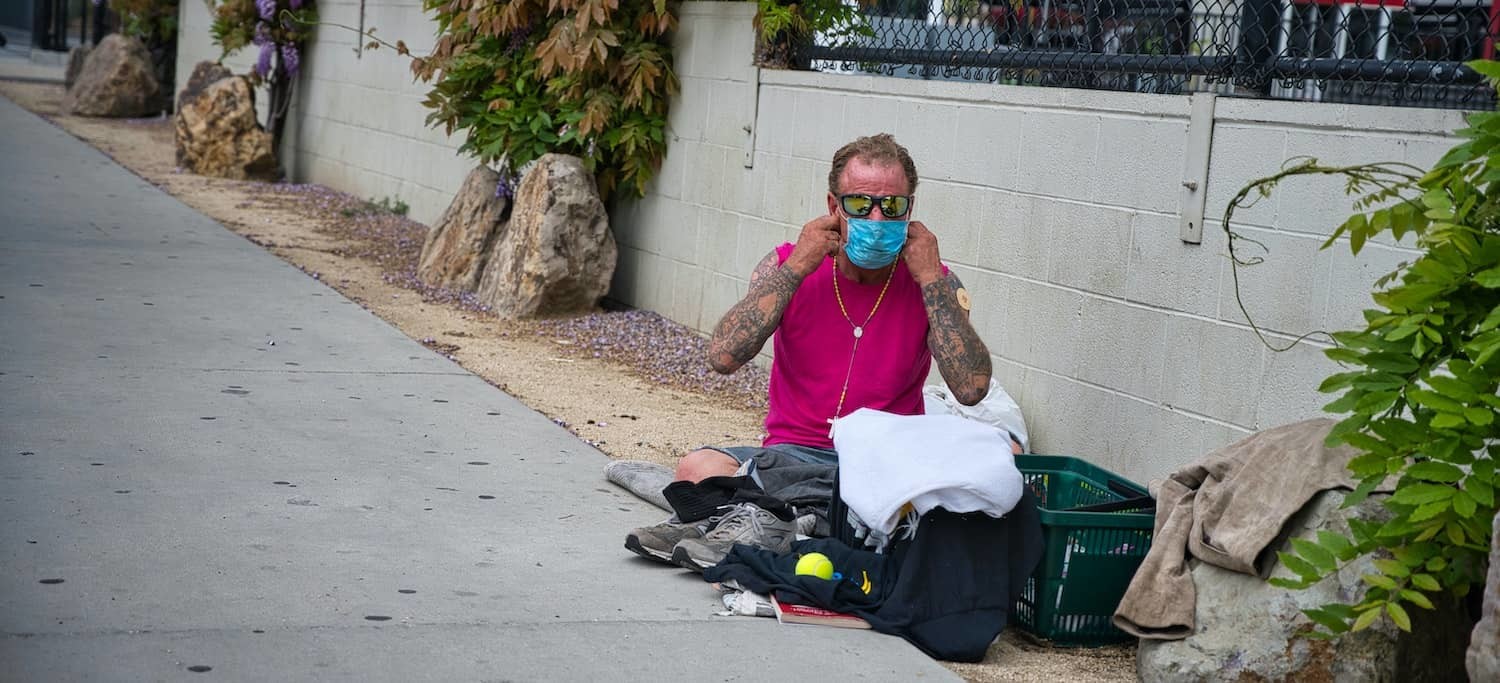As COVID-19 continues to threaten communities across the world, the homeless population is facing a “crisis in a crisis.” Below is a presentation I’ve put together on the state of homelessness in Los Angeles, the impact COVID-19 has had on this population, and a few resources where you can find additional information.
Don’t have time to read the full article? Download the Healthcare Provider’s Guide to Caring for Vulnerable Populations During COVID-19.
What is homelessness?
The Department of Housing and Urban Development defines homeless as, “an individual or family who lacks a fixed, regular, and adequate nighttime residence.”
Emergency shelters, rapid rehousing programs, and transitional housing may fit the “adequate nighttime residence” definition, but these are not “places meant for human habitation,” and people are still considered literally homeless in these housing arrangements.
Additionally, stays in institutions such as jails, hospitals, and inpatient treatment facilities for less than 90 days do not constitute as a break in homelessness, and individuals are still considered literally homeless.
Homelessness in Los Angeles Before COVID-19
Before COVID-19 happened across the globe, homelessness in Greater Los Angeles was increasing. The Los Angeles Homeless Services Authority’s (LAHSA) point-in-time count showed a 12.7% increase year-over-year, and reported those experiencing chronic homelessness increased 17%, youth homelessness increased 24%, and black people being 4 times more likely to experience homelessness in LA.
With widespread job loss, increased risk for medical expenses, 8.3 million Americans being behind on rent, and the unemployment rate at 7.9% as of August 2020, it’s difficult to imagine the number of homeless people doing anything but increase with likely thousands of individuals and families undoubtedly living on the edge of homelessness.
Further Reading: State of Homelessness (2020 Edition)
Shelter in Place Guidelines for Homeless People

Organizations like the National Alliance to End Homelessness acted quickly to identify and implement protocols to safeguard homeless populations. In March 2020, The Homelessness Research Institute concluded that $11.5 billion dollars was necessary for 400,000 new shelter beds to accommodate unsheltered homeless people while maintaining social distancing and quarantine protocols.
The Center for Disease Control (CDC) also put together a comprehensive document detailing how homeless service providers, community organizers, and local officials can support homeless people during COVID-19.
For more information about how you can support homeless populations, consider these resources:
- Homelessness and COVID-19 FAQs – CDC
- US Department of Housing and Urban Development (HUD) Resources
- US Interagency Council on Ending Homelessness (USICH) Coronavirus (COVID-19) Resources
An Aging Homeless Population
LAHSA, in their 2019 report, found that senior homelessness increased 8% since the previous year. Because many people who are homeless are older adults or have pre-existing medical conditions and comorbidities they face an increased risk for severe illness.
For evidence, the Coalition for the Homeless, charted the age-adjusted mortality rate for sheltered homeless New Yorkers. As of September 15, the overall New York City mortality rate due to COVID-19 was 227 deaths per 100,000 people. For sheltered homeless New Yorkers, it was 377 deaths per 100,000 people – or 66 percent higher than the New York City rate.
Older adults experiencing homelessness age faster than everyone else. In fact, homeless people in their 50s have been experiencing geriatric conditions (e.g. memory loss and dementia, falls, functional impairments) at rates similar to members of the general population in their 70s. Now, medically vulnerable older adults include people as young as 45-50.
Self Reported Health Challenges of Sheltered vs. Unsheltered Homeless People
| XXXX 721 | 2 units | Neuroscience for Dental Residents Lectures and seminars on the neurophysiologic and neuroanatomic bases of chronic orofacial pain disorders. |
| XXXX 724 | 2 units | Psychological and Psychometric Assessment for Dental Residents Lectures and seminars on topics relating to bio behavioral diagnosis and psychological management of patients with chronic illness in the orofacial region. |
| XXXX 725 | 2 units | Epidemiology, Nutrition and Aging for Dental Residents Lecture and seminars on the epidemiology of oral disease and nutritional topics as related to the aging patient. |
| XXXX 726 | 2 units | Immunology and Immunosuppression for Dental Residents Lectures and seminars on immunology and immunosuppression for oral and maxillofacial diseases. |
Source: Population At-Risk: Homelessness and the COVID-19 Crisis Fact Sheet
Challenges Facing Homeless Individuals & Families
Encampments, sleeping outdoors, and housing instability make it difficult to engage in activities that can help ward off COVID-19 illnesses and complications. Here is a short list of challenges that homeless people are facing during the pandemic:
- Getting sufficient rest
- Loss of property
- Food insecurity
- Social distancing in encampments and shelters
- Access to running water
- Access to hygienic supplies
Los Angeles County is committed to its unprecedented efforts to address the crisis of homelessness. Through the COVID-19 pandemic, the County is urgently mobilized many volunteers to prevent the spread of COVID-19.
Earn a Postgraduate Degree in Community Oral Health
Like what you’re learning? Consider enrolling in the Herman Ostrow School of Dentistry of USC’s online, competency-based certificate or master’s program in Community Oral Health.


